Energie aus Sonnenlicht - Weltraumforschung mit Sonnenenergie
In dieser Reihe von Aktivitäten lernen die Schüler zwei Konzepte kennen, die das Design von Sonnenkollektoren für Weltraummissionen beeinflussen: das Gesetz des umgekehrten Quadrats und den Einfallswinkel.
Die Schüler führen zwei einfache Untersuchungen mit einer Photovoltaikzelle (Solarzelle) und einer Lichtquelle durch.
Zunächst werden sie messen, wie die von den Solarzellen erzeugte Leistung mit dem Abstand zur Lichtquelle variiert, und versuchen, das Gesetz des umgekehrten Quadrats für die Lichtintensität experimentell zu ermitteln.
Anschließend führen die Schüler ein zweites Experiment durch, um die Abhängigkeit der Leistungsabgabe der Solarzelle vom Einfallswinkel zu untersuchen. Schließlich werden sie diese Konzepte auf reale ESA-Weltraummissionen anwenden.
Lernziele
Altersspanne:
14 - 18 Jahre alt
Zeit
Vorbereitung: 1 Stunde
Aufbau des Experiments: 20 Minuten
Lektion: 1 Stunde und 30 Minuten
Aufbau des Experiments: 20 Minuten
Lektion: 1 Stunde und 30 Minuten
Ressource verfügbar in:
Aktion 1: Das Quadratische Umkehrgesetz
In dieser praktischen Übung berechnen die Schüler die Leistungsabgabe eines Solarmoduls, indem sie den elektrischen Strom und die elektrische Potenzialdifferenz messen und versuchen, das inverse Quadratgesetz aus ihren experimentellen Messungen abzuleiten.
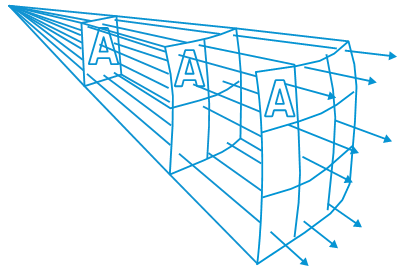
Ausrüstung
Aktion 2: Der Einfallswinkel
In dieser Aktivität lernen die Schüler die Bedeutung des Einfallswinkels und die Vorteile einer optimalen Positionierung von Solarzellen kennen. In einem Experiment messen sie, wie der Einfallswinkel die Leistungsabgabe beeinflusst.
Ausrüstung
Aktion 3: Mit Solarenergie den Weltraum erforschen
In dieser Aktivität üben die Schüler die Anwendung des Gesetzes des umgekehrten Quadrats auf reale ESA-Weltraummissionen. Die Schüler entdecken, wie sich die Eigenschaften des inversen quadratischen Gesetzes darauf auswirken, wie groß die Sonnenkollektoren sein müssen und wie wichtig der Einfallswinkel für Missionen ist, die sich nahe an die Sonne heranwagen.
Ausrüstung
Wussten Sie das?
Die Internationale Raumstation (ISS) wird durch Solarzellen mit Strom versorgt. Das Bild auf der rechten Seite zeigt einige der Solarzellen auf der ISS, in der bis zu sechs Astronauten gleichzeitig leben. Während die ISS die Erde umkreist, können die Sonnenkollektoren so gedreht werden, dass sie direkter auf die Sonne ausgerichtet sind. Die Paneele überspannen eine Fläche von 2500 m³ - das entspricht der Größe eines halben Fußballfeldes.
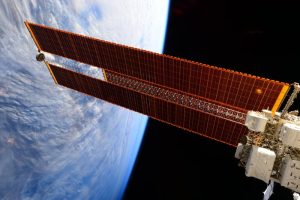
Solarzellen auf der ISS
Schlüsselwörter:
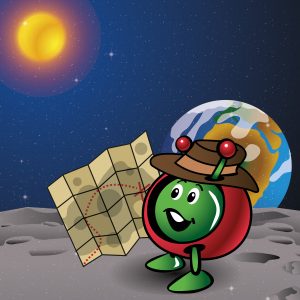
Mission auf dem Mond - Programmieren Sie einen Klassenkameraden, um eine Mission auf dem Mond durchzuführen.
Kurzbeschreibung: Diese Aktivität führt die SchülerInnen in logisches Denken ein, indem sie eine einfache Mission auf dem Mond planen, testen und durchführen. Die Schüler arbeiten in
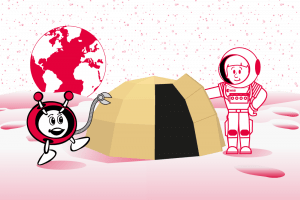
Moon Shelter - Erforschung verschiedener Schutzräume auf der Erde und im Weltraum
Kurzbeschreibung: In dieser Reihe von Aktivitäten analysieren die Schülerinnen und Schüler die Bedeutung von Unterkünften zum Schutz auf der Erde und im Weltraum. Die SchülerInnen vergleichen
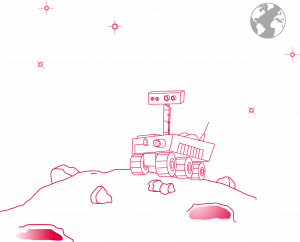
Moon Rover - Bau eines solarbetriebenen Rovers
Kurzbeschreibung: In dieser Aktivität vergleichen die SchülerInnen die Vor- und Nachteile von erneuerbaren und nicht-erneuerbaren Energiequellen und untersuchen einfache elektrische Schaltkreise.



